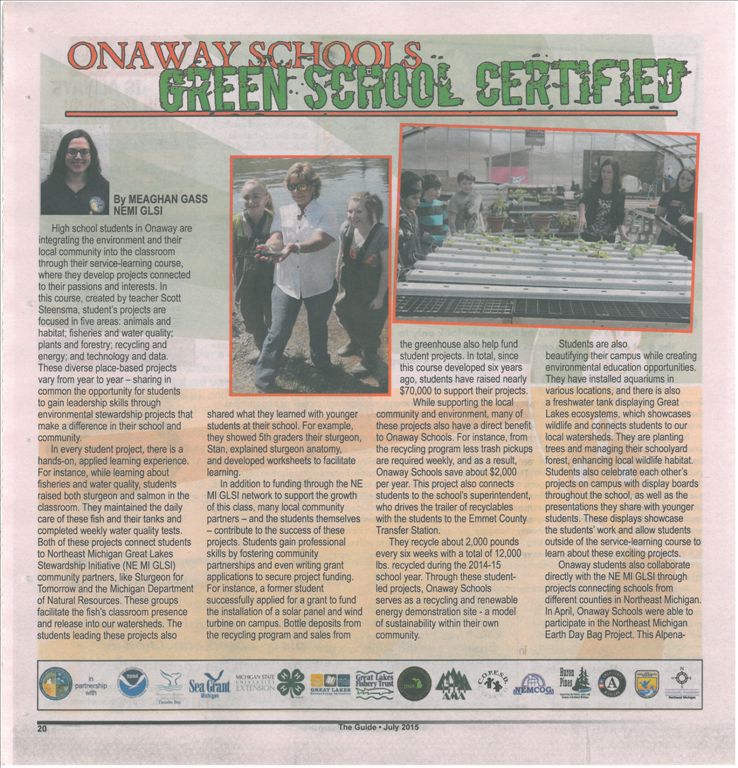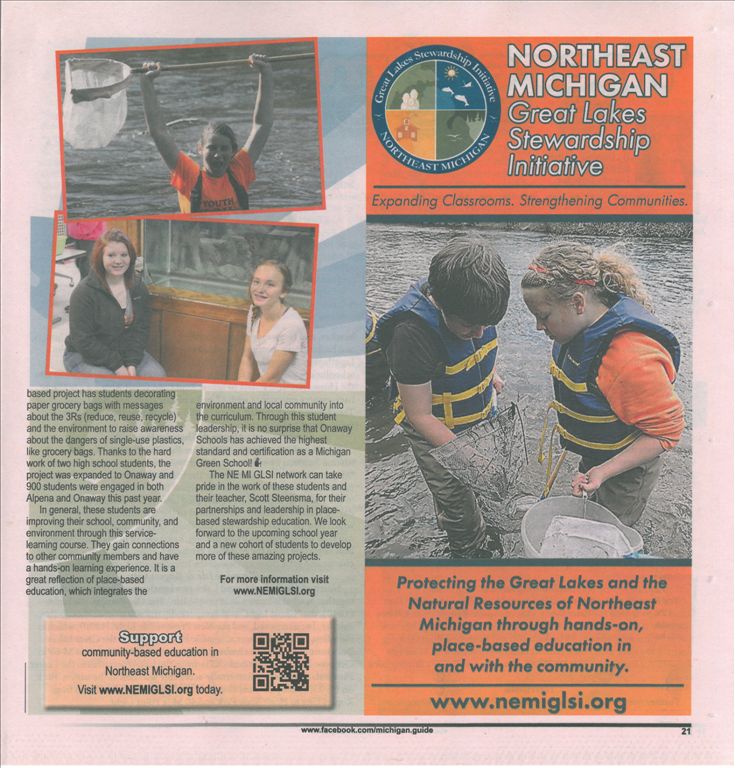By: Meaghan Gass, Huron Pines AmeriCorps NE MI GLSI
The Guide - July 2015
High school students in Onaway are integrating the environment and their local community into the classroom through their service-learning course, where they develop projects connected to their passions and interests. In this course created by teacher, Scott Steensma, students’ projects are focused in five areas: animals and habitat; fisheries and water quality; plants and forestry; recycling and energy; and technology and data. These diverse place-based projects vary from year to year – sharing in common the opportunity for students to gain leadership skills through environmental stewardship projects that make a difference in their school and community.
In every student project, there is a hands-on, applied learning experience. For instance, while learning about fisheries and water quality, students raised both sturgeon and salmon in the classroom. They maintained the daily care of these fish and their tanks and completed weekly water quality tests. Both of these projects connect students to Northeast Michigan Great Lakes Stewardship Initiative (NE MI GLSI) community partners, like Sturgeon for Tomorrow and the Michigan Department of Natural Resources. These groups facilitate the fish’s classroom presence and release into our watersheds. The students leading these projects also shared what they learned to younger students at their school. For example, they showed 5th graders their sturgeon, Stan, explained sturgeon anatomy, and developed worksheets to facilitate learning.
In addition to funding through the NE MI GLSI network to support the growth of this class, many local community partners – and the students themselves – contribute to the success of projects. Students gain professional skills by fostering these community partnerships and even writing grant applications to secure project funding. For instance, a former student successfully applied for a grant to fund the installation of a solar panel and wind turbine on campus. Bottle deposits from the recycling program and sales from the greenhouse also help fund student projects. In total since this course developed six years ago, students have raised nearly $70,000 to support their projects...

